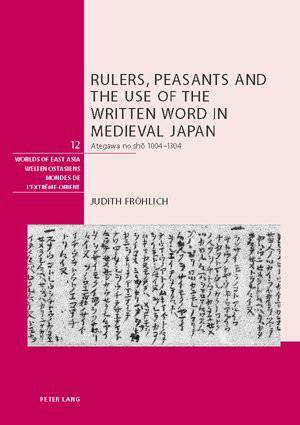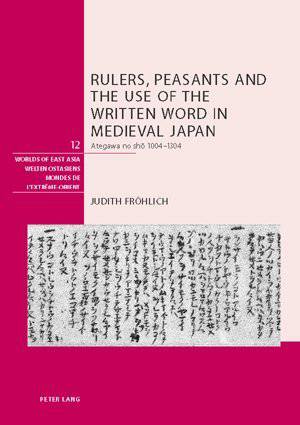
- Afhalen na 1 uur in een winkel met voorraad
- Gratis thuislevering in België vanaf € 30
- Ruim aanbod met 7 miljoen producten
- Afhalen na 1 uur in een winkel met voorraad
- Gratis thuislevering in België vanaf € 30
- Ruim aanbod met 7 miljoen producten
Zoeken
Rulers, Peasants and the Use of the Written Word in Medieval Japan
Ategawa No Shō 1004-1304
Judith Fröhlich
€ 48,45
+ 96 punten
Omschrijving
This book provides new insights into the creation and use of written texts in medieval Japan. Drawing upon lawsuits from Ategawa no shō in central Japan between the early eleventh and early fourteenth centuries, the author analyses the use of writing by various social groups - temple priests, warriors and peasants. Though these social groups had different levels of literacy and accordingly followed different communicative traditions, their use of writing had common features. In the semi-literate society of medieval Japan the dissemination and reception of written texts took place primarily through speaking and hearing. Documents of the medieval period therefore had a distinctly oral characteristic. Priests, warriors and peasants all alluded to motifs in their legal pleas that were in essence given by the oral world of tales, legends and gossip. By showing that literacy was not in conflict but interacted with orality, the author uncovers an important aspect of the use of the written word in medieval Japan.
Specificaties
Betrokkenen
- Auteur(s):
- Uitgeverij:
Inhoud
- Aantal bladzijden:
- 226
- Taal:
- Engels
- Reeks:
- Reeksnummer:
- nr. 12
Eigenschappen
- Productcode (EAN):
- 9783039111947
- Verschijningsdatum:
- 6/07/2007
- Uitvoering:
- Hardcover
- Formaat:
- Genaaid
- Afmetingen:
- 150 mm x 220 mm
- Gewicht:
- 459 g

Alleen bij Standaard Boekhandel
+ 96 punten op je klantenkaart van Standaard Boekhandel
Beoordelingen
We publiceren alleen reviews die voldoen aan de voorwaarden voor reviews. Bekijk onze voorwaarden voor reviews.











